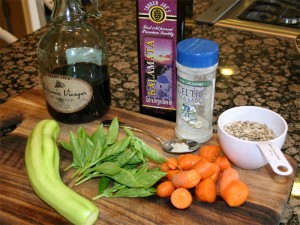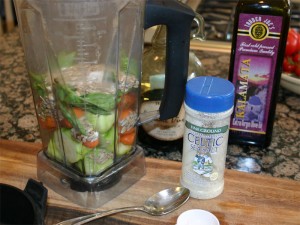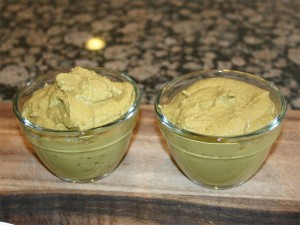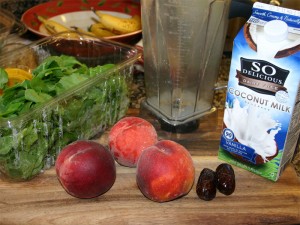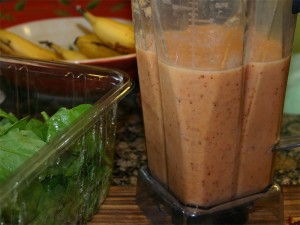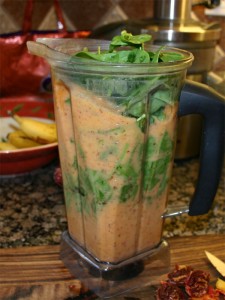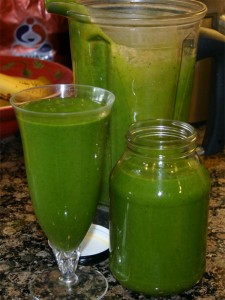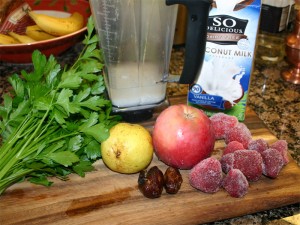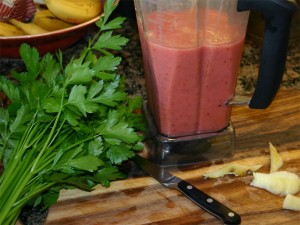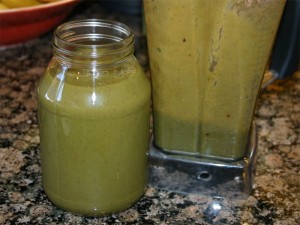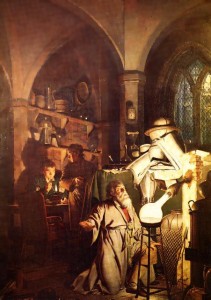 I would love to be able to truthfully tell you – exactly – what The Philosopher’s Stone is, but, the simple fact is that you would be hard pressed to find anyone that could tell you. At least, if I’ve run into someone that has experienced The Philosopher’s Stone, they didn’t share that fact with me. When you really think about it, you’d have to ask yourself – why would they? What would they have to gain from telling anyone? Or, probably more importantly, would they stand to lose anything? The later seems more probable. Yet, there still may be clues that we can follow that will help us understand.
I would love to be able to truthfully tell you – exactly – what The Philosopher’s Stone is, but, the simple fact is that you would be hard pressed to find anyone that could tell you. At least, if I’ve run into someone that has experienced The Philosopher’s Stone, they didn’t share that fact with me. When you really think about it, you’d have to ask yourself – why would they? What would they have to gain from telling anyone? Or, probably more importantly, would they stand to lose anything? The later seems more probable. Yet, there still may be clues that we can follow that will help us understand.
As many of you know, I came across The Book of Aquarius a few months back and mentioned that I would keep you informed regarding my observations in the forum. If you haven’t read the book, I highly encourage you to give it a few hours. It’s a free download and an easy read. Also, visit the forum if you have questions and, or, if you’re like me, you’ll visit the forum in order to get a better understanding with regards to what people are thinking.
Of all the questions that people mention in the forum, the thing that surprises me the most is that there are a lot of questions that seem to indicated that the readers have not picked up a basic understanding of what The Philosopher’s Stone is. But can you blame them? The information that can be found on the net is pretty vague. The definitions describe that it can do, but do not really describe what it is.
Let’s look at what it can do and then see if we can get some hints about its true nature from its actions.
As much as people hate Wikipedia, I love the fact that it’s a data source created by multiple people. It may or may not be the absolute truth, but it should give us the general concept (if nothing else) from which we can continue our search. So, here is a bit from Wikipedia’s Philosopher’s Stone section.
The philosopher’s stone (Latin: lapis philosophorum) is a legendary alchemical substance said to be capable of turning base metals (lead, for example) into gold (chrysopoeia) or silver. It was also sometimes believed to be an elixir of life, useful for rejuvenation and possibly for achieving immortality. For many centuries, it was the most sought-after goal in Western alchemy. The philosopher’s stone was the central symbol of the mystical terminology of alchemy, symbolizing perfection at its finest, enlightenment, and heavenly bliss. Efforts to discover the philosopher’s stone were known as the Magnum Opus.[1]
To help us come to a better understanding regarding this substance/item, I’m going to track some key points so that we can review them later. When looking at the above paragraph, I find, 1) It can turn base metals into gold (or silver), 2) it is useful for rejuvenation, 3) it may help someone achieve immortality, 4) It is believed to be an elixir of life. We’ll keep this list and add to it as we come across other definitions.
From the same Wikipedia link above, let’s read more about its properties.
The philosopher’s stone has been attributed with many mystical and magical properties. The most commonly mentioned properties are the ability to transmute base metals into gold or silver, and the ability to heal all forms of illness and prolong the life of any person who consumes a small part of the philosopher’s stone.[12] Other mentioned properties include: creation of perpetually burning lamps,[12] transmutation of common crystals into precious stones and diamonds,[12] reviving of dead plants,[12] creation of flexible or malleable glass,[13] or the creation of a clone or golem.[14]
Let’s add to our list 5) creation of perpetually burning lamps, 6) transmutation of common crystals into precious stones, 7) reviving dead plants, 8) creation of flexible glass, 9) creation of a clone.
The appearance, from what I read at the same link, is pretty specific.
Descriptions of the Philosopher’s Stone are numerous and various.[18] According to alchemical texts, the philosopher’s stone came in two varieties, prepared by an almost identical method: white (for the purpose of making silver), and red (for the purpose of making gold), the white stone being a less matured version of the red stone.[19] Some ancient and medieval alchemical texts leave clues to the supposed physical appearance of the philosopher’s stone, specifically the red stone. It is often said to be orange (saffron colored) or red when ground to powder. Or in a solid form, an intermediate between red and purple, transparent and glass-like.[20] The weight is spoken of as being heavier than gold,[21] and it is said to be soluble in any liquid, yet incombustible in fire.[22]
We can add to its attributes that it is 10) White, or 11) Red. 12) It is prepared, rather than found. 13) It is glass like and can be ground into a powder. 14) It is heavier than gold. 15) It is soluble in any liquid. 16) It is incombustible in fire.
So far, it doesn’t seem like there is anything specific that contradicts the other attributes. That physical description seems pretty believable. It’s almost as if someone’s seen The Philosopher’s Stone and actually ground it into a powder!
Let’s dig around and see what else we can find.
The Crystalinks website has an interesting page about The Philosopher’s Stone. What surprises me is that it mirrors much of the data found on Wikipedia. I couldn’t tell you which location would be the source. There is also a nice page of links to other alchemy related pages. You’ll have to be careful surfing through these links for you might be there for days!
On the little more bazaar side of things, I found a channeling of Atun-Re by Kevin Ryerson.
The philosopher’s stone that was sought so long by the alchemists of Egypt, Atlantis, Babylon, and amongst the kings in the farthermost reaches of the East and West, is your own consciousness. Yes, my children, the philosopher’s stone is your own consciousness.
I’m open minded with regards to people channeling stuff, but I’m always finding myself looking to validate this type of information. I’m going to add this attribute to the list unless we can find something that is conflicts with. For now 17) it is your own consciousness.
The next quote is a blurb from AlchemyLab.com. This one is a little more personal for it is the stone according to the Sufis (a Muslim ascetic and mystic) point of view. Here we find:
The stone according to the Sufis, is the dhat, the essence, which is so powerful that it can transform whatever comes into contact with it. It is the essence of man, which partakes of what people call the divine. It is “sunshine,” capable of uplifting humanity to the next stage….
…
This Philosopher’s Stone or Universal Elixir was an alchemical preparation made from the mineral kingdom. The Medieval philosophers claimed that when properly prepared the mineral stone could transmute base metals into gold; in minute dilutions it could end sickness and retard aging indefinitely, transmuting the human organism into an immortal being.[1][31]
…
In what indicates a continuity of traditions, like the Hindu and Chinese alchemists’ sacred elixir of immortality, the adepts claimed that when taken in a minute dose, this substance would cause the inbiber’s hair and teeth to fall out, later new hair and teeth grow in and the successful alchemist became immortal.
To these mystics, it is 18) ‘the essence’ that can transform whatever come into contact with it. It is also 19) the essence of man, which partakes of what people call the divine. And 20) it is “sunshine” capable of uplifting humanity.
The interesting thing about these mystics is that they put a little more thought into describing what it is rather than simply what it does, for with these additions to the list we get both a description of what it is along with its action.
Oh, and, 21) it will make your hair and teeth fall out as they will be replaced.
Stepping outside the world of words, we can also find audio clips. A few days ago, The Book of Aquarius was mentioned on the Coast to Coast show with Jay Weidner. It’s pretty clear that Jay hasn’t created The Philosopher’s Stone, but he has put time into studying its properties. If you’ve got time, the first 15 minutes are so of the show is where it’s discussed.
If you’re looking for the condensed version, Jay sees it as concentrated Chi. It is the life force Prana that many different philosophies talk about. Here is a link that might give you a better idea of what Chi is: The Buddha Garden.
Jay might be onto something, so I’m going to add that to our list: 22) It is concentrated Chi energy.
And then, of course, there is the definition in The Book of Aquarius which reads (Page 11, first addition. Start of chapter 4.)
The Philosopher’s Stone is energy, concentrated and purified to a massively high degree. This is the same energy that you are taking in when you breathe, and when you eat and drink. It is the energy that powers all forms of life, and so I will call it life-energy (since I have to call is something and “life-energy” is self-explanatory.)
This definition seems to fit what Jay’s figured out. What I find fascinating in this definition is that there are no physical characteristics described; no color, no mass, no texture. It’s just purified energy.
After poking around a bit more, I found another website that has a pretty good write up regarding The Stone. It’s on MonTalk under The Philosopher’s Stone page. Here, it’s not specifically about The Philosopher’s Stone, but rather general about Alchemy.
Alchemical achievements require successful gathering, concentrating, and multiplying of etheric energy. When this energy reaches a critical threshold, it overpowers the normal laws of physics and allows seemingly miraculous processes to take place.
…
Alchemy does not violate the laws of physics, nor does it always follow them, rather it bends them as needed. It operates upon the quantum foundation from which these laws arise in the first place, via etheric energy affecting the probability of quantum events.
The idea here is that The Philosopher’s Stone is a product of Alchemy which is the act of concentrating (etheric) energy. This implies that The Philosopher’s Stone is concentrated etheric energy. I’m not sure how to differentiate that from Chi, so I’m going to keep this in the same category.
You can search around the web and find a lot more examples, but they all seem to come to the same basic description and characteristics. Now is probably a good time to list what we’ve discovered.
What it can do:
- It can turn base metals into gold (or silver)
- It is useful for rejuvenation
- It may help someone achieve immortality
- Creation of perpetually burning lamps
- Transmutation of common crystals into precious stones
- Reviving dead plants
- Creation of flexible glass
- Creation of a clone
- It will make your hair and teeth fall out as they will be replaced
What it’s described as:
- It is believed to be an elixir of life
- It is White
- It is Red
- It is prepared, rather than found
- It is glass like and can be ground into a powder
- It is heavier than gold
- It is soluble in any liquid
- It is incombustible in fire
- It is your own consciousness
- It is concentrated Chi energy
What is it and does together
- It is ‘the essence’ that can transform whatever come into contact with it
- It is the essence of man, which partakes of what people call the divine
- It is “sunshine” capable of uplifting humanity
As I promised above, it’s now time to look to see if we can get a better picture of what it is based upon what The Philosopher’s Stone can do. But first, let’s make some assumptions based on the actual descriptions that have been recorded over time.
It is pretty clear that The Stone has physical characteristics. It has color, mass and texture. Unlike conceptual things like awareness, which can’t be seen or touched, The Stone is an actual object which can be touched. It is also described as an elixir, in its simplest terms, is a potion.
Where things get a little fuzzy is when it’s described as consciousness, Chi and life. Yeah, I might have stretched that last point just a little, but what really is an ‘elixir of life’? Forever, The Stone has been called ‘an elixir of life’. When you think about that statement, the typical response is that it’s a magic potion that gives you more life. Well, how can it give you more life if it is not life itself?
It makes me think of The Stone as a magic potion that is life. At the same time, it makes you wonder what life is also. When we look life up in the Wikipedia we see that others ponder this thought too:
It is still a challenge for scientists and philosophers to define life in unequivocal terms.[12][13][14]
And, why is it a challenging exercise? Well, as I see it, life is a concept rather than an object. Life is like awareness. Awareness is not a thing, but an action. Life seems to be in that same type of category. It is what is done. We live life. All things live life.
So, in this sense, when The Philosopher’s Stone is through of as ‘an elixir of life’, I would guess that it could be thought of as a potion that gives you more of what you do – you live your life.
How does that align with the other descriptions? Well, Chi (Qi) is generally thought of as:
In traditional Chinese culture, qì (also chi or ch’i) is an active principle forming part of any living thing. Qi is frequently translated as “lifeforce” or “energy flow”, and is comparable to the Hindu yogic science of prana, meaning “life force” in Sanskrit.
And Prana is:
In Vedantic philosophy, prana is the notion of a vital, life-sustaining force of living beings and vital energy, comparable to the Chinese notion of Qi. Prana is a central concept in Ayurveda and Yoga, where it is believed to flow through a network of fine subtle channels called nadis. Its most subtle material form is the breath, but it is also to be found in the blood, and its most concentrated form is semen in men and vaginal fluid in women.[1]
So when thought of as ‘an elixir of life’, I translate this statement into something like – it is a concentrated form of the vital energy that living entities need and use at all times.
Now, how does all this relate to what The Philosopher’s Stone is known to do?
Well, this should seem obvious when we look at rejuvenation, immortality, reviving dead plants and creating clones. When you think about reviving a plant, you can’t help but think that you’ve got to give it ‘life’. If The Stone is life, then you would give it some of the stone and, well, you’d probably see the plant come back to life. Regarding rejuvenation, if someone gets to the point where the Chi doesn’t flow through them very well, in Chinese medicine, they would be considered sick. Many sicknesses have been linked to poorly flowing Chi or very low levels of vitality. If that’s what The Stone is, it would make total sense that the poorly flowing Chi would now become super amplified – or more present throughout the body – thus leading to rejuvenation (health). The immortality issue seems a little strange, but natural at the same time. If death is the lack of life and the elixir is life, one would thing that you’d never run out of life. Finally, regarding making a clone, well, that’s just weird! The only thing I have to say about that is in order to create a living thing; you’ve got to give it life. If The Stone can do this, it must be life itself.
Now what about transmuting metals and crystals? Well, this would imply that the metals and crystals are living entities – at least, at one time there were living. It might be similar to working with wood. When the wood is in the form of a tree, it is living. It’s only after processing it into standard lumber that it’s considered dead and stable. This could very well be the same for metals. When you think about crystals, they form in geodes given the proper conditions. Scientists tend to think of these conditions as heat, pressure and purity. They don’t think of one of the conditions as being – living. My guess would be that when the stone is added to these elements, they are brought back to life and they continue to grow towards their final destination. Who would have thought that metals where once alive?
What is interesting about transmuting different substances is that there is not just one substance that it works on! The Stone is said to work on humans as well as plants and now it works on different metals and crystals. This might just imply that the vital life energy can be imprinted (or seeded) with some specific type of life form. That might imply that if you want to grow emeralds, you would have to concentrate this vital life force energy and imprint it with the ‘essence’ of emeralds. The Alchemical texts talk about a fermenting process that needs to be done before The Stone will make more of itself. It would seem that this might be a simple, doable, operation.
Lastly, it is considered the ‘essence.’ If you look up a common definition of essence, you will find that it is “A property or group of properties of something without which it would not exist or be what it is.” (See Google’s Define: essence functionality.) One of the attributes that I included above mention that it is the divine essence of man. In other words, man would not be what he is if this vital life force energy was not present.
In a fairly quick overview, it seems that the mystery of The Philosopher’s Stone is not all that much of a mystery. It is both an object and a concept at the same time. It is something that can be understood and, hopefully, concentrated. I am excited that there are people that are actively participating in the quest for The Philosopher’s Stone. It seems like such a private quest, yet to those in The Book of Aquarius forum, it is public for the entire world to see!
So, if you find yourself wondering what exactly is The Philosopher’s Stone, the first thing that I would do is to think of it as concentrated life sustaining energy like Chi (or Prana). When thinking about how it might be used, you would administer it to objects that you want to give more life too. When you think about how it might affect a person in the forms of ‘an elixir of life’ you would think that it would super-saturate the human body with Chi. If sickness is related to poor Chi, sickness would no longer be an issue.
Make sense?
Now, the next step is making The Philosopher’s Stone. …



